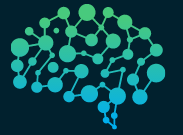10 Best AI Tools for students
What is AI or Artificial Intelligence?
AI, or Artificial Intelligence, refers to the development of computer systems that can perform tasks that typically require human intelligence. These tasks include learning, reasoning, problem-solving, perception, language understanding, and even, to some extent, creativity. The goal of AI is to create systems that can adapt, improve, and perform tasks without explicit programming.
How AI Tools Work?
AI tools work through a combination of data, algorithms, and iterative learning processes. The specific workings can vary depending on the type of AI and its application, but the fundamental principles are generally consistent. Here’s a high-level overview of how AI tools work:
- Data Collection:
- AI systems require data to learn and make predictions or decisions. This data can be labeled (supervised learning) or unlabeled (unsupervised learning) and should be relevant to the task at hand.
- Data Preprocessing:
- Raw data often needs to be cleaned, organized, and preprocessed to ensure it’s suitable for training AI models. This step may involve handling missing values, normalizing data, and other preprocessing techniques.
- Training Data and Model Training:
- In supervised learning, the AI model is trained on a labeled dataset, where the input data is paired with the corresponding desired output or label. During training, the algorithm learns to map inputs to outputs by adjusting internal parameters.
- Feature Extraction (Optional):
- Depending on the complexity of the task, feature extraction may be necessary. This involves selecting relevant features or characteristics from the data that contribute to the model’s ability to make accurate predictions.
- Algorithm Selection:
- Different AI tasks require different algorithms. For instance, machine learning tasks may use algorithms like decision trees, support vector machines, or neural networks, depending on the problem’s nature.
- Model Evaluation:
- After training, the model is evaluated using a separate dataset that it hasn’t seen before. The evaluation metrics depend on the specific task but may include accuracy, precision, recall, or F1 score.
- Iterative Learning (Optional):
- Depending on the model’s performance, the process may involve iterating on the algorithm, adjusting parameters, or gathering additional data to improve the model’s accuracy and generalization to new data.
- Deployment:
- Once the model is trained and evaluated satisfactorily, it can be deployed to perform its intended task. This could involve integrating it into a software application or system.
- Inference:
- During inference, the trained model processes new, unseen data and provides predictions, classifications, or other outputs based on what it has learned during training.
Must Read...
8 Ways to Make Money With AI in 2024
Best AI Tools For Students
OpenAI’s GPT-3 (and successors): GPT-3 is a powerful language model capable of generating human-like text. Several platforms and applications integrate GPT-3 for various writing tasks.
Grammarly: A widely used tool that not only corrects grammar and spelling but also provides style suggestions and helps improve overall writing quality.
ShortlyAI (now called ShortlyAI): Leverages GPT-3 for content creation, helping users generate articles, blog posts, and other written content based on prompts.
Writesonic: A content creation tool powered by AI, allowing users to generate marketing copy, blog posts, social media content, and more.
Copysmith: Specifically designed for creating advertising copy, product descriptions, and marketing content using natural language processing.
Articoolo: An AI-powered content creation tool that can generate articles and blog posts based on user-provided topics and keywords.
Scribe (formerly known as Copy.ai): Offers various AI-powered writing tools for content creation, including blog post generation, brainstorming ideas, and more.
Wordtune: Uses AI to provide suggestions for rewriting and improving the clarity and style of written content.
Outwrite: An AI-powered writing assistant that helps with grammar checking, style suggestions, and improving overall writing skills.
Jellyfish AI: Utilizes AI to assist with content creation, helping users generate articles, blog posts, and other written materials.

